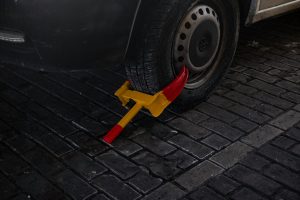Decoding Warning Lights: Your Vehicle’s Secret Language
Have you ever been driving along, minding your own business, when suddenly a warning light appears on your dashboard? For many drivers, this can be a source of panic and confusion. Why is a strange symbol flashing at me? What does it mean? And, most importantly, is it something I need to be concerned about?
The Importance of Understanding Warning Lights
It’s easy to become complacent when it comes to warning lights on our vehicles. We may ignore them, assuming they’re just a minor issue, or we may even cover them up with a piece of tape. However, these warning lights are an essential source of communication from our vehicles, informing us of potential problems that could lead to more significant issues if not addressed.
Understanding what these warning lights mean and taking immediate action can save you time, money, and stress in the long run. So, let’s dive into the secret language of your vehicle and learn how to decode these warning lights.
The Most Common Warning Lights and What They Mean
There is a wide range of warning lights that may appear on your dashboard, and their meanings can vary depending on the make and model of your vehicle. However, there are a few common warning lights that you are likely to encounter. Here’s what they mean:
Check Engine Light
The check engine light is typically represented by the engine symbol. It can indicate a wide range of issues, from a loose gas cap to a more severe problem with your engine. When this light appears, it’s essential to check your vehicle’s owner’s manual to determine the possible cause, or take it to a mechanic for a diagnostic check.
Battery/Charging System Warning Light
The battery or charging system warning light is typically represented by a battery symbol. When this light appears, it means there is an issue with your vehicle’s charging system, which could be caused by a faulty battery, alternator, or other component. Ignoring this warning could result in your vehicle breaking down, so it’s crucial to address it promptly.
Oil Pressure Warning Light
The oil pressure warning light is typically represented by an oil can symbol. When this light appears, it means that your oil pressure has dropped below a safe level. Continuing to drive with this warning light on could lead to severe engine damage, so it’s best to pull over and address the issue immediately.
Tire Pressure Warning Light
The tire pressure warning light is typically represented by an exclamation point inside of a curved U symbol. When this light appears, it means that one or more of your tires’ air pressure is low. Over or under-inflated tires can affect your vehicle’s handling and fuel efficiency, so it’s crucial to check your tire pressure and adjust as needed.
What to Do When a Warning Light Appears
If a warning light appears on your dashboard, the first thing you should do is check your owner’s manual to determine the possible cause and recommended course of action. If you’re unsure or uncomfortable addressing the problem yourself, it’s best to take your vehicle to a mechanic for a diagnostic check. It’s always better to be safe than sorry when it comes to the health and safety of your vehicle.
In some cases, the warning light may indicate a minor issue that you can fix yourself, such as tightening a loose gas cap or adding air to your tires. However, it’s always best to double-check with a mechanic to ensure there are no underlying problems causing the warning light to appear.
Preventing Warning Lights from Appearing
While some warning lights may be inevitable, there are steps you can take to prevent them from appearing as often. Regularly scheduled vehicle maintenance is essential for keeping your vehicle in tip-top shape and preventing any potential issues from arising. By following your vehicle’s recommended maintenance schedule, you can catch and address problems before they become more significant, saving you time and money in the long run.
In Conclusion
Warning lights are your vehicle’s secret language, and it’s essential to understand what they mean and take immediate action when they appear. By being proactive and staying on top of your vehicle’s maintenance, you can prevent warning lights from appearing and keep your vehicle running smoothly. So, the next time a warning light appears on your dashboard, don’t panic – take action.











